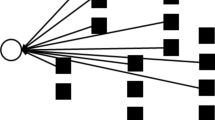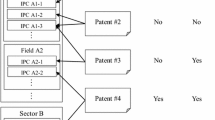Abstract
Recent years have witnessed rapid and widespread technology convergence (TC) in various technical fields. Researchers often focus on developing new methods to identify TC in a specific field without studying the temporal trend of TC and comparing it among different fields. To fill the research gap, this study extends the literature to examine TC in 35 technical fields with 49,687,173 patents from 2000 to 2018. Interestingly, the analysis results show that Shannon, Tsallis, and Renyi entropies, as the indicators of TC, perform differently in describing temporal trends in TC. Further investigation shows that Shannon entropy cannot well depict the incremental trend of TC as single-field patents increased steeply. Thus, Tsallis entropy is used to analyze TC in the study. And we further analyze the complementary (CTC) and substitutability (STC) technology convergence of four representative technical fields. The results show CTC and STC are heterogeneous in the industrial development stage. Industries represent a high level of CTC and a low level of STC in early R&D stage, while STC increases significantly during industrial development. This study contributes to the literature by clarifying the measurements for TC and identifying CTC and STC in various industries.









Similar content being viewed by others
References
Acs, Z. J., Anselin, L., & Varga, A. (2002). Patents and innovation counts as measures of regional production of new knowledge. Research Policy, 31(7), 1069–1085.
Alizadeh, L., & Ebrahimi, M. (2018). Rényi and Tsallis and Shannon entropies on D-posets. Journal of Intelligent & Fuzzy Systems, 34(4), 2771–2781.
Cho, J. H., Lee, J., & Sohn, S. Y. (2021). Predicting future technological convergence patterns based on machine learning using link prediction. Scientometrics, 126(7), 5413–5429.
Cho, Y., & Kim, M. (2014). Entropy and gravity concepts as new methodological indexes to investigate technological convergence: Patent network-based approach. PLoS ONE, 9(6), e98009.
Choi, J. Y., Jeong, S., & Kim, K. (2015). A study on diffusion pattern of technology convergence: Patent analysis for Korea. Sustainability, 7(9), 11546–11569.
Coccia, M. (2012). Evolutionary trajectories of the nanotechnology research across worldwide economic players. Technology Analysis & Strategic Management, 24(10), 1029–1050.
Criscuolo, P. (2006). The ‘home advantage’ effect and patent families. A comparison of OECD triadic patents, the USPTO and the EPO. Scientometrics, 66(1), 23–41.
Curran, C. S., & Leker, J. (2011). Patent indicators for monitoring convergence–examples from NFF and ICT. Technological Forecasting and Social Change, 78(2), 256–273.
Duan, Y., & Guan, Q. (2021). Predicting potential knowledge convergence of solar energy: Bibliometric analysis based on link prediction model. Scientometrics, 126(5), 3749–3773.
Furman, J. L., Porter, M. E., & Stern, S. (2002). The determinants of national innovative capacity. Research Policy, 31(6), 899–933.
Gambardella, A., & Torrisi, S. (1998). Does technological convergence imply convergence in markets? Evidence from the electronics industry. Research Policy, 27(5), 445–463.
Gauch, S., & Blind, K. (2015). Technological convergence and the absorptive capacity of standardisation. Technological Forecasting and Social Change, 91, 236–249.
Geum, Y., Kim, C., Lee, S., & Kim, M. S. (2012). Technological convergence of IT and BT: Evidence from patent analysis. Etri Journal, 34(3), 439–449.
Grupp, H. (1990). The concept of entropy in scientometrics and innovation research: An indicator for institutional involvement in scientific and technological developments. Scientometrics, 18(3–4), 219–239.
Hacklin, F. (2007). Management of convergence in innovation: Strategies and capabilities for value creation beyond blurring industry boundaries. New York: Springer.
Hacklin, F. (2008). Fundamentals of convergence and innovation. In Management of convergence in innovation: Strategies and capabilities for value creation beyond blurring industry boundaries (pp. 25–49).
Hacklin, F., Marxt, C., & Fahrni, F. (2009). Coevolutionary cycles of convergence: An extrapolation from the ICT industry. Technological Forecasting and Social Change, 76(6), 723–736.
Hwang, I. (2020). The effect of collaborative innovation on ICT-based technological convergence: A patent-based analysis. PLoS ONE, 15(2), e0228616.
Jung, S., Kim, K., & Lee, C. (2021). The nature of ICT in technology convergence: A knowledge-based network analysis. PLoS ONE, 16(7), e0254424.
Karvonen, M., & Kässi, T. (2012). Industry convergence analysis with patent citations in changing value systems. International Journal of Business and Systems Research, 6(2), 150–175.
Karvonen, M., Lehtovaara, M., & Kässi, T. (2012). Build-up of understanding of technological convergence: Evidence from printed intelligence industry. International Journal of Innovation and Technology Management, 9(03), 1250020.
Kim, B., Gazzola, G., Yang, J., Lee, J. M., Coh, B. Y., Jeong, M. K., & Jeong, Y. S. (2017). Two-phase edge outlier detection method for technology opportunity discovery. Scientometrics, 113(1), 1–16.
Kim, J., & Lee, S. (2017). Forecasting and identifying multi-technology convergence based on patent data: The case of IT and BT industries in 2020. Scientometrics, 111(1), 47–65.
Kim, K. (2017). Impact of firms’ cooperative innovation strategy on technological convergence performance: The case of Korea’s ICT industry. Sustainability, 9(9), 1601.
Kodama, F. (1996). Emerging patterns of innovation: Sources of Japan s teleological edge. R&D Management, 26, 179–181.
Kolmogorov, A. N., & Uspenskii, V. A. (1958). On the definition of an algorithm. Uspekhi Matematicheskikh Nauk, 13(4), 3–28.
Lei, D. T. (2000). Industry evolution and competence development: The imperatives of technological convergence. International Journal of Technology Management, 19(7–8), 699–738.
Leydesdorff, L., Kushnir, D., & Rafols, I. (2014). Interactive overlay maps for US patent (USPTO) data based on International Patent Classification (IPC). Scientometrics, 98(3), 1583–1599.
Lissoni, F. (2001). Knowledge codification and the geography of innovation: The case of Brescia mechanical cluster. Research Policy, 30(9), 1479–1500.
Lybbert, T. J., & Zolas, N. J. (2014). Getting patents and economic data to speak to each other: An ‘algorithmic links with probabilities’ approach for joint analyses of patenting and economic activity. Research Policy, 43(3), 530–542.
Porter, A., & Rafols, I. (2009). Is science becoming more interdisciplinary? Measuring and mapping six research fields over time. Scientometrics, 81(3), 719–745.
Rényi, A. (1961, June). On measures of entropy and information. In Proceedings of the fourth Berkeley symposium on mathematical statistics and probability (Vol. 1, pp. 547–561).
Rosenberg, N. (1963). Technological change in the machine tool industry, 1840–1910. The Journal of Economic History, 23(4), 414–443.
Ruan, J., & Gopinath, M. (2010). Technological convergence, competitiveness, and welfare: A study of international manufacturing industries. The Journal of International Trade & Economic Development, 19(4), 517–551.
Schmoch, U. (2008). Concept of a technology classification for country comparisons. Final report to the world intellectual property organisation (wipo), WIPO.
Shannon, C. E. (1948). A mathematical theory of communication. The Bell System Technical Journal, 27(3), 379–423.
Sinai, Y. G. (1959, December). On the notion of entropy of a dynamical system. In Doklady of Russian Academy of Sciences (Vol. 124(3), pp. 768–771).
Singh, A. K., Shafique, M., Kumar, A., & Henkel, J. (2013, May). Mapping on multi/many-core systems: Survey of current and emerging trends. In 2013 50th ACM/EDAC/IEEE design automation conference (DAC) (pp. 1–10). IEEE.
Song, J., Almeida, P., & Wu, G. (2003). Learning–by–hiring: When is mobility more likely to facilitate interfirm knowledge transfer? Management Science, 49(4), 351–365.
Stieglitz, N. (2007). Digital dynamics and types of industry convergence: the evolution of the handheld computers market. In J. F. Christensen & P. Maskell (Eds.), The new industrial dynamics of the new digital economy (pp. 179–208).
Stirling, A. (2007). A general framework for analysing diversity in science, technology and society. Journal of the Royal Society Interface, 4(15), 707–719.
Suh, J., & Sohn, S. Y. (2015). Analyzing technological convergence trends in a business ecosystem. Industrial Management & Data Systems, 115, 719–739.
Swink, M. (2003). Completing projects on-time: How project acceleration affects new product development. Journal of Engineering and Technology Management, 20(4), 319–344.
Teece, D. J. (2018). Dynamic capabilities as (workable) management systems theory. Journal of Management & Organization, 24(3), 359–368.
Tsallis, C. (1988). Possible generalization of Boltzmann-Gibbs statistics. Journal of Statistical Physics, 52(1), 479–487.
Yayavaram, S., & Chen, W. R. (2015). Changes in firm knowledge couplings and firm innovation performance: The moderating role of technological complexity. Strategic Management Journal, 36(3), 377–396.
Funding
This research is funded by the National Natural Science Foundation of China (NSFC 72072087) and the National Social Science Foundation (20&ZD154).
Author information
Authors and Affiliations
Corresponding author
Ethics declarations
Conflict of interest
The authors have no relevant financial or non-financial interests to disclose. This article does not contain any studies with human or animal subjects.
Appendix
Rights and permissions
Springer Nature or its licensor holds exclusive rights to this article under a publishing agreement with the author(s) or other rightsholder(s); author self-archiving of the accepted manuscript version of this article is solely governed by the terms of such publishing agreement and applicable law.
About this article
Cite this article
Zhu, W., Ma, B. & Kang, L. Technology convergence among various technical fields: improvement of entropy estimation in patent analysis. Scientometrics 127, 7731–7750 (2022). https://doi.org/10.1007/s11192-022-04557-6
Received:
Accepted:
Published:
Issue Date:
DOI: https://doi.org/10.1007/s11192-022-04557-6




